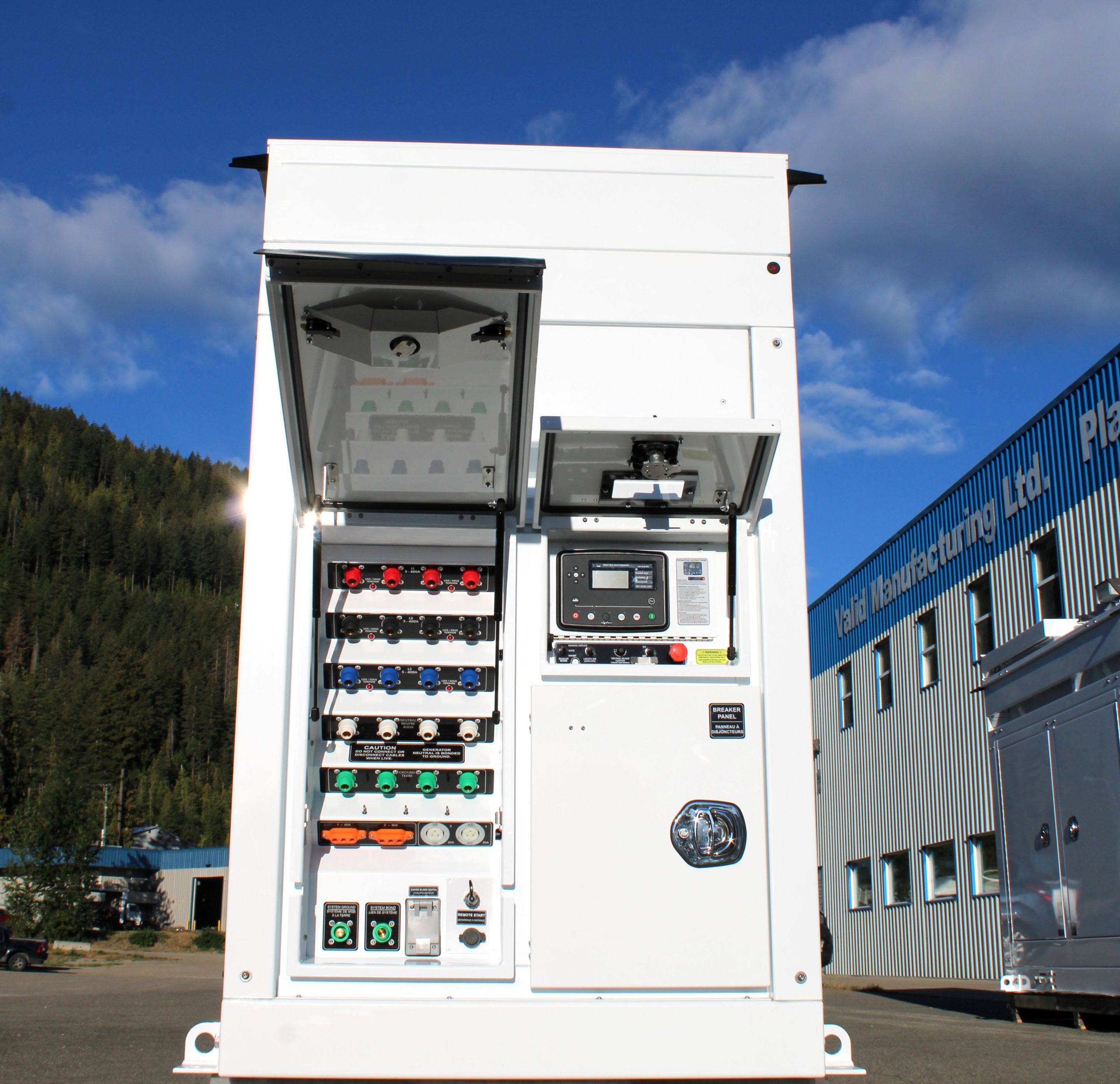Not all film shooting can happen in a studio. In many situations, producers will film on location instead. So, where do they get their power in these remote locations with no access to grid tie-ins? Larger productions that opt for location filming often create large base camps. These camps require durable portable power generators that can provide enough energy to power lights, rigging, trailers, electric vehicles, and more! Producers must also take efficiency and environmental factors into account when powering productions in remote locations. Selecting the right power equipment reduces fuel costs, unnecessary emissions, and strain on the generator’s engine. Valid has done the research and collected the data to understand the needs of the film industry. As a result, we have created a reliable, high-efficiency portable studio generator for location filming.
What is remote / location filming?

Location filming is when productions shoot in the actual setting the story takes place, like in a desert or mountain setting. In filmmaking, producers often choose to shoot on location because they believe that greater realism can be achieved in a “real” place, however location shooting is also often motivated by the film’s budget. It is often believed that filming “on location” takes place in the actual location in which its story is set, but that is not usually the case.
Instead, producers may utilize areas that have the same desired look for the scene but are located somewhere completely different than the story. Most films have a combination of on-location and studio shoots. Low-budget films usually do more location shooting than bigger budget films because the cost of shooting at a place that already exists can be cheaper than building one from scratch.
Canada, in particular, has become a very popular destination for location filming. International and US film makers are choosing Canada for their productions because it’s less expensive to shoot exteriors. The increase in production activity within the country has created job opportunities and has prompted producers to utilize Canadian manufactured equipment.
Location filming challenges

Weather
Location filming most certainly comes with challenges – a big one being the weather. Shooting scenes outdoors puts productions in a vulnerable position where they may need to be in rainy or snowy environments. The film “The Mountain Between Us” was filmed in a remote location in the Columbia Mountains, where they built a wreckage scene in extreme winter conditions on the side of a mountain.
Productions like this require portable power generation equipment that is insulated and able to withstand harsh temperatures in difficult locations. Another shooting challenge is the rain. If filming in locations that are prone to heavy rainfall, producers must ensure that their power equipment is effective and waterproof.
Transportation
Getting the equipment to these remote locations poses another challenge for production crews. Power equipment must often be brought in on a truck or custom trailer. If filming takes place up mountain roads, the equipment may by subjected to vigorous bouncing, causing vibrations and risking damage. Location filming requires portable generators manufactured to withstand frequent and rigorous vibrations.
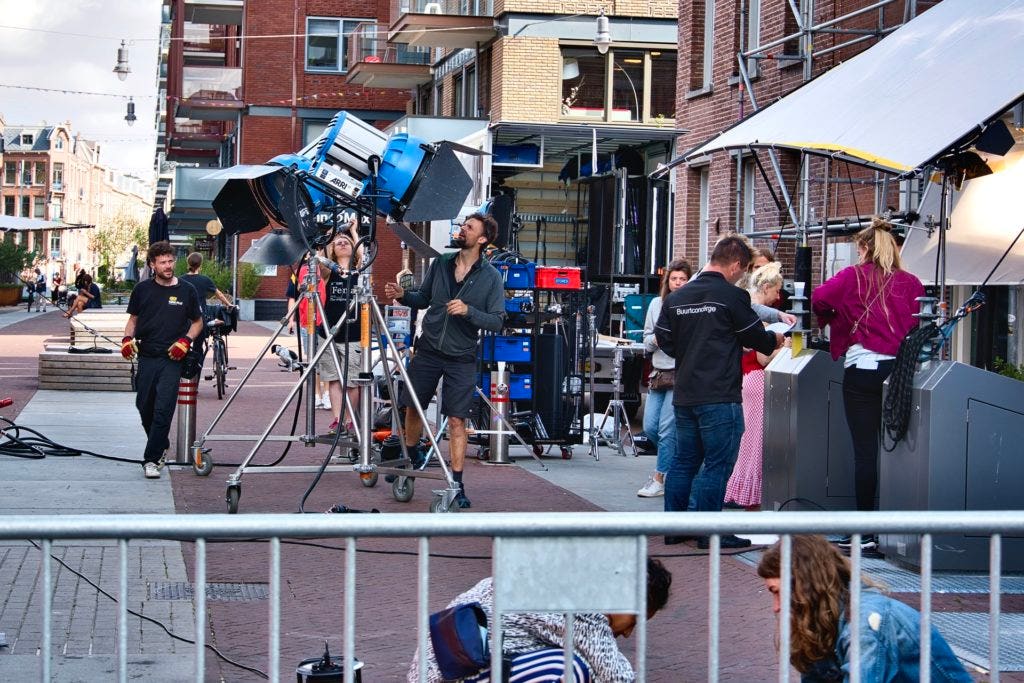
Space
Space availability can also cause concerns for location filming. When filming in a city, circus trailers and power equipment parked on the streets can take up a large amount of space. Equipment must be capable of maneuvering in tight locations while taking up a minimal footprint.
Environment
The last challenge is what most would consider the largest: producers are becoming more and more committed to reducing film production’s overall environmental footprint, with a focus on reducing their emissions output. In circumstances where productions are creating entire sets in a desert or up a mountain, there is an inevitable environmental impact, but it’s very important for productions to make every effort to minimize this.
Many productions require a “base camp” or “circus” to be set up, which can have many large tractor trailers and trucks to provide temporary indoor space for hair & makeup, holding cast, storing equipment, feeding crew, etc. All of this requires efficient portable power equipment to keep it going. By increasing the knowledge on how to efficiently power all aspects of film production, the industry can both save on fuel and maintenance costs while reducing their emissions output.
Importance of understanding your portable power generators
On average, a basecamp consumes 300 Amps (100 Amp per phase) and peak demand is around 420 Amps (140 Amps per phase). These values can change depending on the weather. In the summer or winter, if heat or air conditioning is required, the peak demands can be quite a bit higher. Typically, gaffers will bring in 1400 Amp generators to supply power to these base camps without understanding how this will dramatically increase their fuel costs and create unnecessary emissions.
If a 1400 Amp generator is running at less than 300 Amps, it’s running only at 21% capacity. There has been amazing progress made over the last 20 years in cleaning up the harmful pollutants from diesel engine generators. Comparing a modern Tier4 engine with a Tier2 engine, Nitrous Oxides and particulate matter pollutants have been reduced by a factor of 100X for the same power output. Carbon Monoxide emissions have been reduced by a factor of 600X! In order to ensure proper operation of these modern engines, they should be loaded to at least 30% of their rated capacity.
Running a generator under 30% capacity can prevent the engine and exhaust system from getting up to the proper operating temperature. This impacts fuel efficiency, can prematurely wear the engine and causes excessive fouling of the exhaust system. If gaffers use a smaller 800 Amp generator, the 300 Amp loads consume a more efficient 37% capacity, allowing the cleaning features in the engine to do their job properly and reduce emission output. A smaller engine will also reduce fuel waste, as less fuel is required to obtain the same amount of power.
How much power does remote filming require?
Reports show that 1400 Amp diesel generators are underutilized on film sets. Valid’s Remote Monitoring System is providing solid evidence that productions are running their current generators at inefficiently low loads, typically under 300 Amps, 80% of the time.
With the Valid Remote Monitoring System, Valid tracked 20 generator’s average power consumption over a 5-month period. The report below shows that, on average, 18 of the 20 generators did not go over 256 Amps.
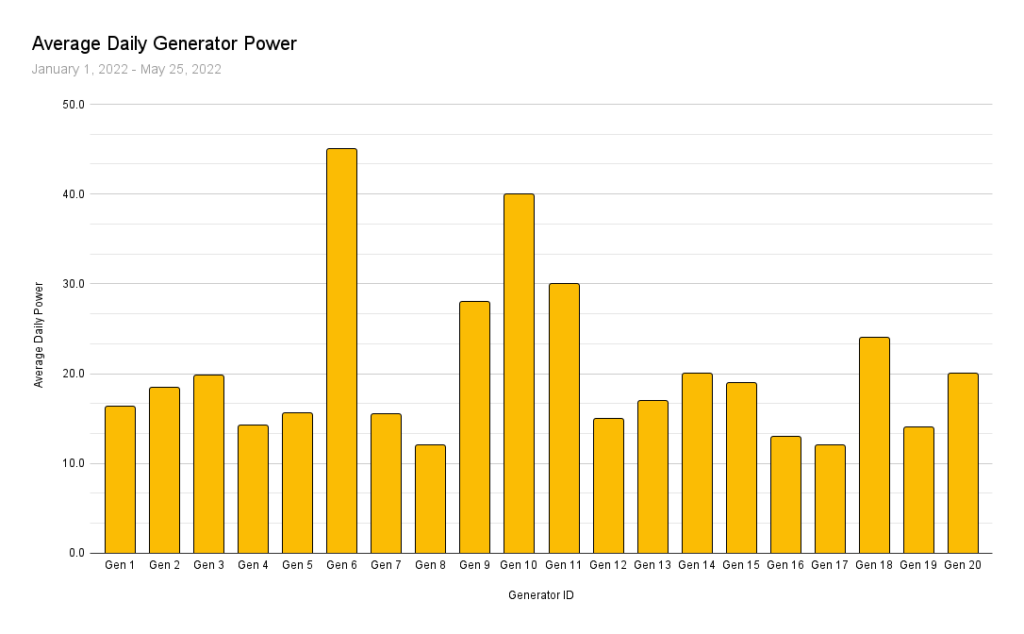
Going even further into the data, we found that the generators went over 800 Amps only 13% of the time. Of this 13%, some of these circumstances could be credited to load banking, where the generator is run at high loads to burn off any buildup that may have happened because the unit ran on too low of loads for too long.
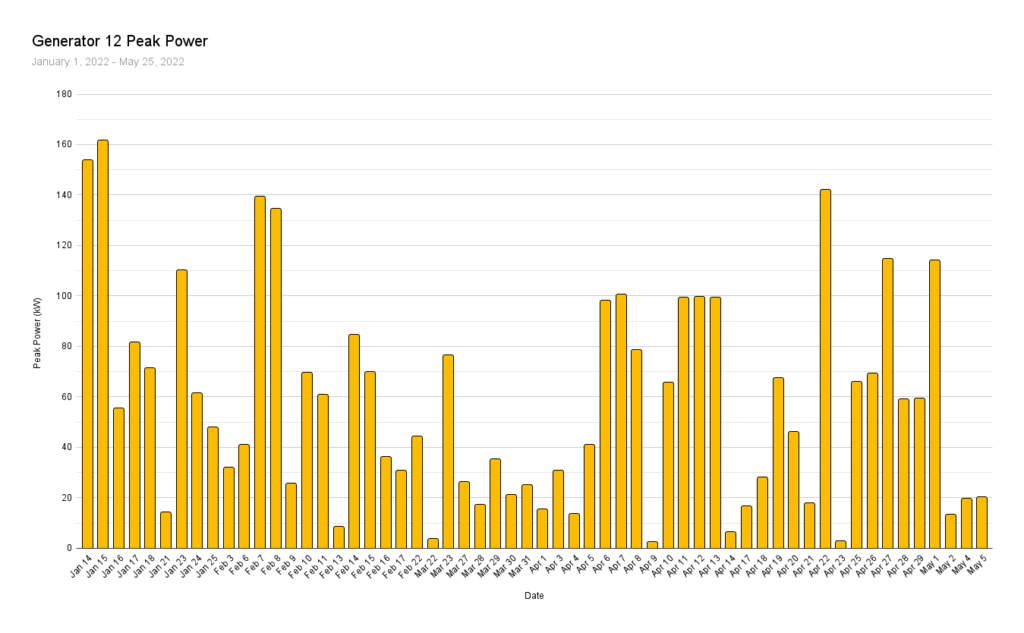
Valid provides a reliable, efficient portable power solution
Valid understands the needs of the film industry. The VPS800A-T4 studio generator was designed to optimize film equipment power and minimize environmental impact.
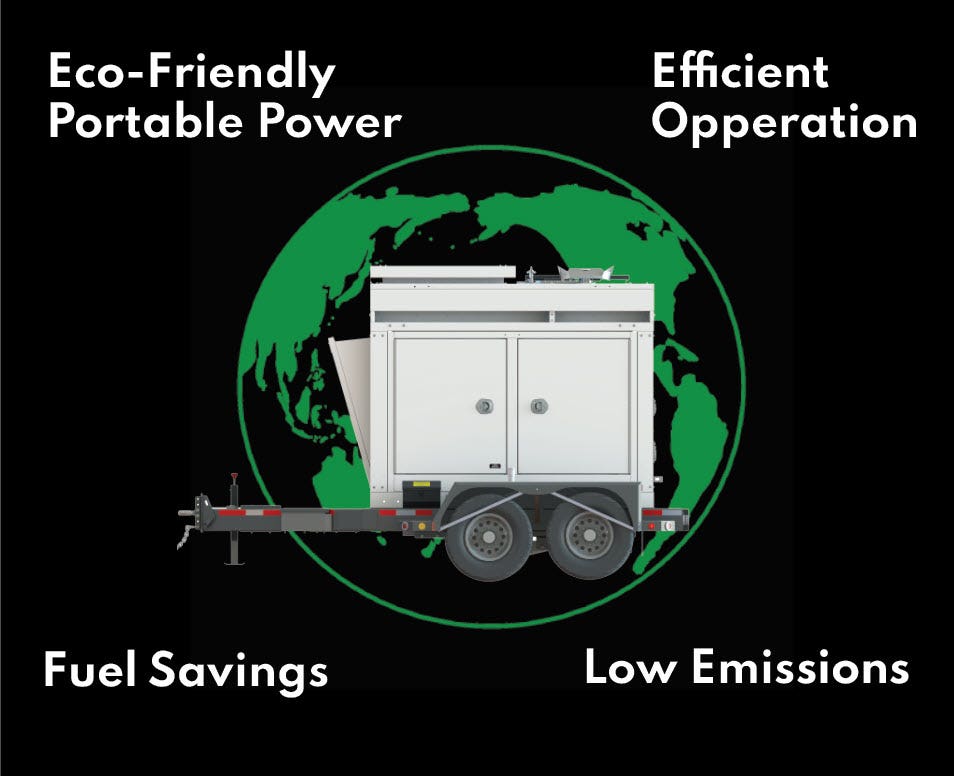
Generator optimization features
The VPS800A-T4 studio generator boasts state-of-the-art features that help protect the equipment so it can operate efficiently. To protect the batteries from running too low, Valid developed a Low Battery Voltage Disconnect, which automatically turns off all unnecessary loads if the batteries run too low due to parasitic drains, thereby reducing the likelihood of needing a jump start. Valid also included a solar battery charging system to help keep the batteries charged while in long-term storage. The VPS800A-T4 features a “passive roof cap” that eliminates the pop-up hatches typically found on a studio generator. This prevents the generator, from projecting noise upwards which can be an issue in urban environments. The roof cap features a series of large sound baffles to remain super quiet while still allowing full air flow for radiator cooling. These generators also feature a Deep Sea 8610 MKII controller giving them the capability to be paralleled.
Generator environmental benefits
The VPS800A-T4 is designed with the environment in mind. Developed to reduce energy waste on film sets, the VPS units provide adequate power for film production while reducing emission output. Regulations are pushing the film industry to adopt greener technology. Tier 3 engines have been banned from use in new generators. Cummins developed their T4 engine to maximize productivity and reliability across a wide range of equipment. The engines meet the Environmental Protection Agency’s (EPA’s) Tier 4 Final. Valid’s studio generators utilize this technology, making them among the most environmentally-friendly options available.
Below are emission reduction stats comparing a Tier 3 to Tier 4 engine
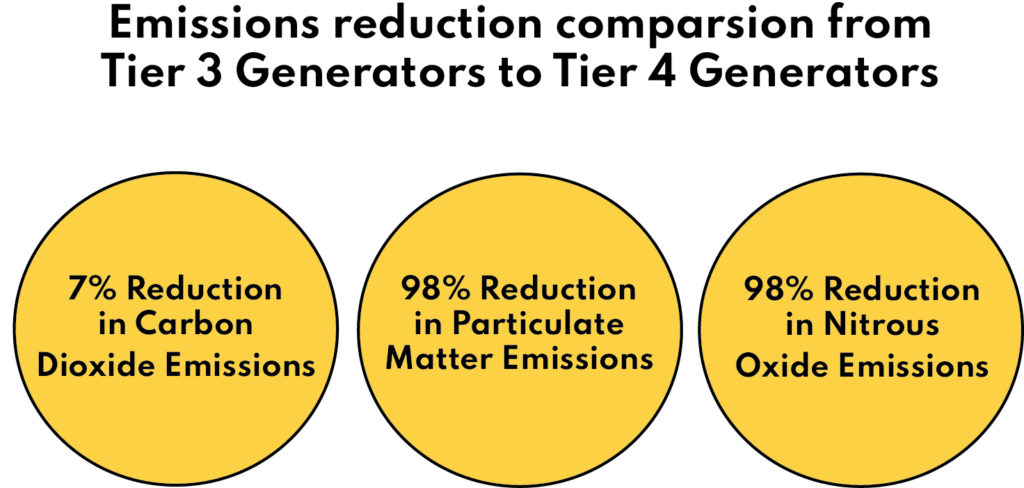
Building Trust with Accurate Information
The film industry has clearly recognized the need to reduce their environmental footprint, but implementing change can be met with uncertainty. Providing information on how film sets operate and where improvements can be made will build trust and eventually excitement within the industry to continue to adopt better, more efficient technology. Valid will continue to keep pace with technology and environmental regulations, offering portable power generation equipment that fully suits the needs of film production.

